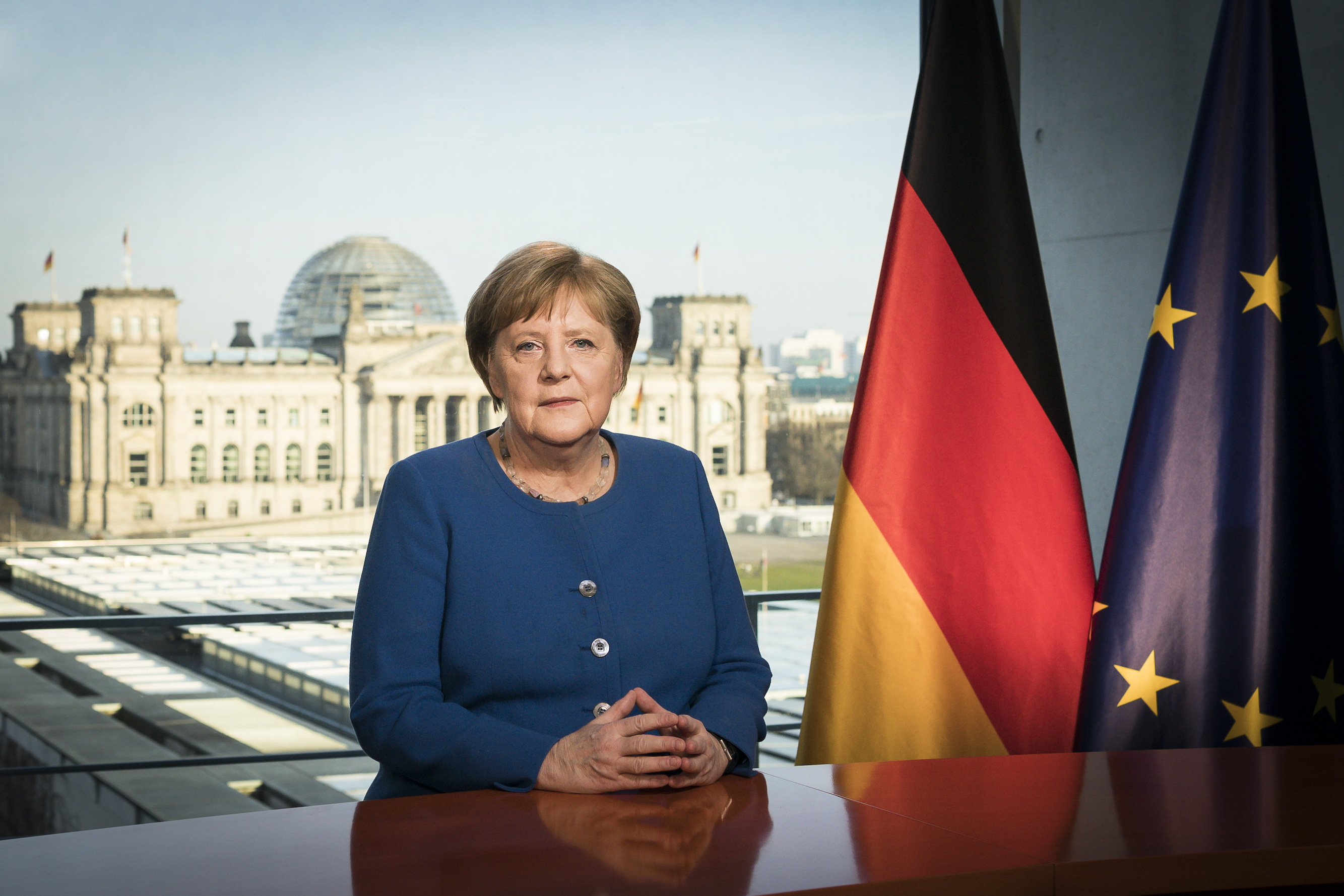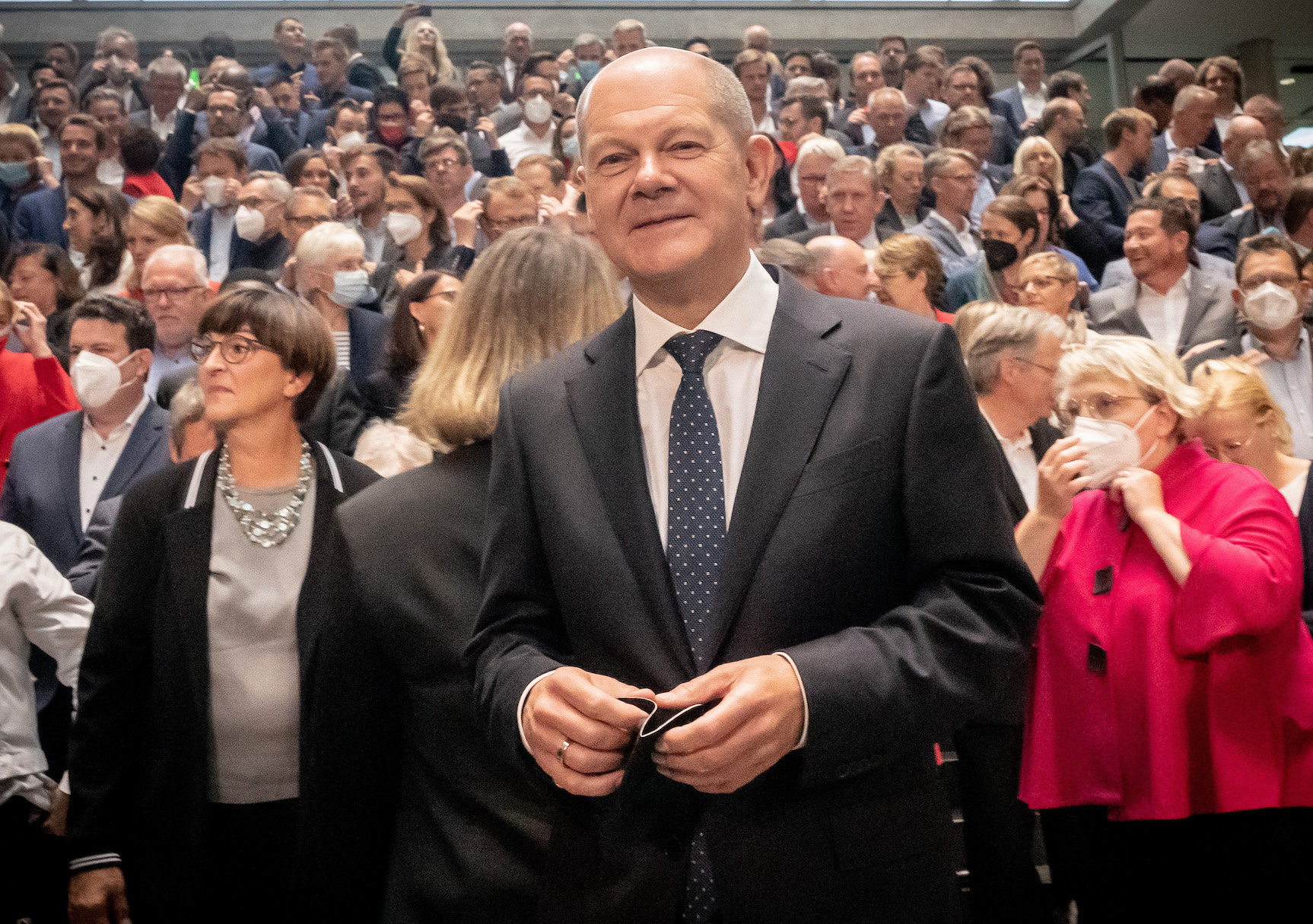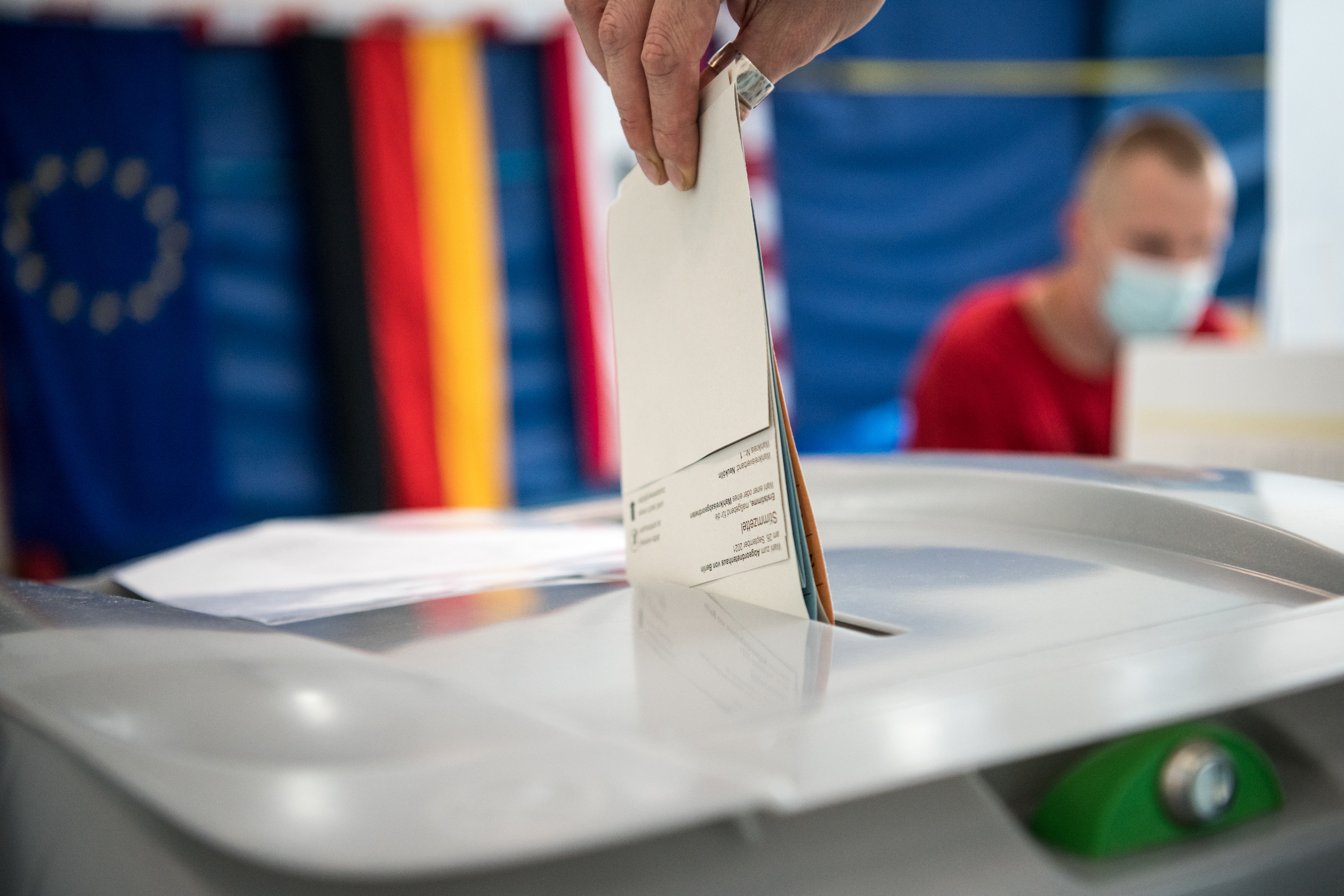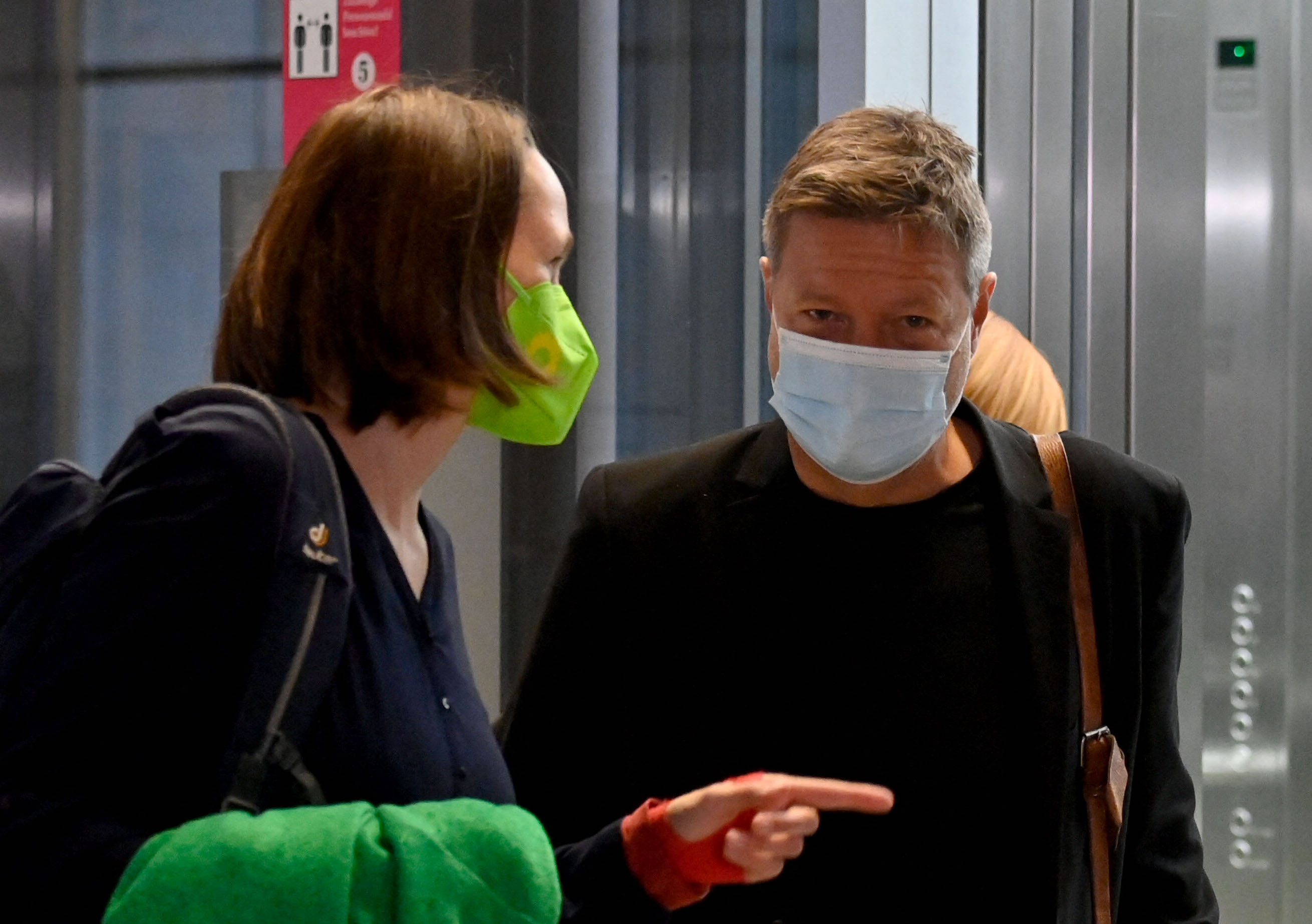
Politics & Society
Submarines and vaccines: France’s 2022 presidential elections

After a knife-edge result in Germany’s Federal elections there are now three parties that must negotiate to form a coalition
Published 1 October 2021
Sunday’s Federal elections in Germany mark the end of Angela Merkel’s 16-year term and the beginning of a new era in German politics. Regardless of who forms the next government, the election will be historic for several reasons.
As the Bundestag is proportionally elected, political parties must negotiate to form coalitions with each other in order to govern. Two parties have traditionally dominated German politics: the Christian Democratic Union/Christian Social Union (CDU/CSU) and the Social Democratic Party of Germany (SPD).

These have been referred to as ‘Volksparteien’ or ‘catch all’ parties – political parties capable of appealing across demographics and to a variety of voters.
Coalitions – particularly at the Federal level – have been historically formed with at least one of those parties as the major coalition partner, in partnership with one or two other ‘junior’ coalition partners. A ‘Grand Coalition’ of CDU/CSU and SPD, led by CDU/CSU Chancellor Angela Merkel, governed between 2005 to 2009, and then again since 2013.
While both the SPD (25.7 per cent) and the CDU/CSU (24.1 per cent) secured the largest votes of all the political parties in this election, the combined vote for the two ‘Volksparteien’ sunk to the lowest in post-war German history. And the CDU/CSU in particular — under the leadership of Armin Laschet — recorded their worst election result, following a sudden decline in the polls.

Politics & Society
Submarines and vaccines: France’s 2022 presidential elections
This is significant for several reasons.
Firstly, it means that the next government will, for the first time since the 1950s, likely be formed by a coalition between three political parties. This departs from the traditional model of two-party coalitions at the Federal level and may create a degree of instability, particularly while coalition negotiations are underway.
SPD Chancellor candidate, Olaf Scholz, has signalled that he isn’t willing to enter into a new ‘Grand Coalition’ between the SPD and CDU/CSU.
As the two parties with the next highest share of the vote, the Greens (with 14.8 per cent) and the Free Democratic Party (FDP) (11.5 per cent) will be the ‘Kanzlermacher’ or ‘kingmakers’ who choose the Volkspartei with which they will form government.

The far-right Alternative for Germany (10.3 per cent), by contrast, will play no role in building a coalition as all other parties have ruled out any form of cooperation with the extreme right.
Secondly, the election results and the decline of the “Volkspartei” indicate that German politics is pluralising.
This is also clear in the volatility of the polls in the weeks leading to the election, which indicates an increasing willingness amongst voters to switch political camps.

Politics & Society
Is Europe heading for divorce?
It also points to the increasing role of personalisation in driving election results. Increased voter focus on the personality of leader arguably speaks to the effect of Angela Merkel upon German politics and the vacuum created after her departure.
German voters elect the Federal Bundestag through a system of mixed-member proportional representation.
Voters submit two ballots. The first (‘Erststimme’) allows the voter to choose the candidate they would like to represent the voter’s district and follows a first-past-the-post system.

The second ballot (‘Zweitstimme’) allows the voter to choose the political party they would like to govern, which determines the percent of seats the party will have in the Bundestag.
The number of seats in the Bundestag fluctuates to accommodate both the 298 seats for districts, and whichever additional number is necessary to allow party representation proportional to that elected in the second ballot. The most recent Bundestag had 709 members.
Traditionally, the party that receives the highest vote invites other parties to enter into negotiations to form a coalition. If this pattern repeats, Olaf Scholz will emerge as the next Chancellor in a coalition with the FDP and Greens.

Politics & Society
The tectonics of the British election
In a twist on tradition, the FDP and Greens have proposed that they first meet to negotiate with one another, before they then meet with the other parties.
Once parties agree that they would like to form a coalition, the parties finalise a coalition contract and determine which party will occupy which ministry. Negotiations between the parties may continue over weeks, if not months, during which time the current government will remain in a caretaker role.
Although the SPD gained a higher vote compared to the 2017 election, this election’s results confirm that the ‘Volksparteien’ are in decline.
‘Grand Coalitions’ comprised three of the four coalitions under the leadership of Angela Merkel. For the first time, neither party has achieved greater than 30 per cent of the vote.

Three other parties (the Greens, FDP and AfD) achieved double digit percentages. Only the Left Party remained in single digits and surprisingly failed to get past the five percent hurdle.
On the one hand, the poor performance of the ‘Volksparteien’ reflects a greater degree of fatigue with their dominance in government.
Perhaps more significantly, the poor performance of CDU/CSU and SPD demonstrates the reduced significance of ‘Volksparteien’ for younger voters.

Politics & Society
The future of post-Brexit Britain
The Greens, followed closely by the FDP, received the highest votes amongst voters under 25. This means that, leaving aside the existential threat the youth demographic’s vote poses for ‘Volksparteien’, the SPD and CDU will need to adjust to coalition models involving three parties.
Regardless of who ultimately forms a coalition, a number of issues will be crucial for the the next government constellation. The climate crisis has become one of the most important issues in Germany, particularly following the floods of July 2021.
Over the coming weeks, the CDU will focus on what went wrong. The public mood turned against the CDU remarkably quickly during the final weeks of the election.
The Greens face similar questions. The Greens led the polls with 28 per cent of the vote in May. While they significantly increased their votes since the last election, they failed to follow through on the prospect of a Green chancellor.

The fluctuation in polls, particularly during the final weeks of the campaign, arguably reflects the vacuum left by Angela Merkel’s departure. Germans were voting on Merkel’s successor – whose leadership was arguably characterised by her personalised style of managing crises, rather than taking the initiative on debates about Germany’s future.
Following the experience of this campaign, the CDU/CSU may provide even greater power to its leadership. Individual politicians may even attempt to take an example from Austria’s Chancellor Sebastian Kurz who overhauled the image of the Österreichische Volkspartei (ÖVP) or People’s Party.
One aspect of Angela Merkel’s appeal was her apparent ability to marry progressive policies with a number of conservative commitments. How Germany – and the conservatives – adjust in her wake remains to be seen.
A version of this article was first published on Election Watch.
Banner: Getty Images